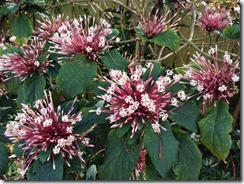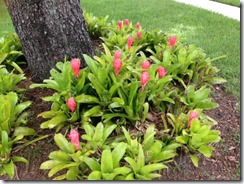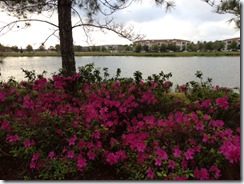So you want to write a blog. Or you already have a blog but want to increase your subscribers. What now? Here are tips on getting started and attracting followers.
Define Your Purpose.
Do you wish to share news about your work? Be recognized as an expert in your field? Build a community? Engage with readers? Have other writers look to you for advice? Share information relevant to a special interest?
Determine Your Goals.
Do you mean to increase book sales? Have a substantial number of followers? Get a number of comments on each blog? Have folks reblog your posts? Receive requests for guest posts?
Set Parameters.
How often do you intend to post? What days of the week are best? What time during the day will more people likely read your post? How long should each post be?
Brainstorm Topics.
When you’re writing a book, jot down blog topics related to your theme, research, and writing process. These will be useful either to show your story in progress or to provide fodder for blog tours when your new release comes out. Meanwhile, determine what readers want to know and address these topics. What information can you share with others that might be useful? How can your content add value to people’s lives? In what way can your personal anecdotes inspire others? Some authors set certain days for specific blog topics. For example, one day they might post recipes. Another day they might bring in a guest blogger. Excerpts, book reviews, or trivia related to a particular hobby or personal interest might fill in other slots. Or you might wing it, writing posts as they come to you. Just keep in mind the image or brand you wish to project.
Acquire a Site.
When you’re ready to start, register at WordPress.com or Blogger.com for a free site. Or add a blog to your website. Become familiar with the features and start posting.
Link Blog to Your Social Media Sites.
Not only should visitors be able to tweet and share your particular article around the Web, but your posts should be automatically tweeted and sent to your Facebook pages. Check your Settings for how to enable these features or ask your Web designer to add the proper Plug-In. Get Share Buttons at http://www.sharethis.com or http://www.addtoany.com Add your blog to Networked Blogs, http://www.networkedblogs.com. Some authors use Triberr to raise their visitors: http://triberr.com/landing/bloggers.
What Pages Should Your Blog Site Contain?
Keep in mind that visitors to your blog, if separate from your website, might not visit you elsewhere. So consider what tabs you’ll want to have. Here are some suggestions: Home; About (Bio); Appearances; Book Trailers; Books List; Contact (your email); Contests. In one sidebar, you can show your book covers. In lieu of this, you can use a rotating carousel or slide show from Amazon. Sidebars can also contain a Blog Roll, Search box, Subscribe button, Social Networking Icons, Live Twitter feed, and RSS feed button.
Include Photos in your posts.
Photos will draw more hits, but be careful of copyright issues. Upload your own photos. Buy photos at royalty-free sites or at least make sure you provide attribution. Many writers skirt this issue, but you do so at your own risk.
Tag your Posts.
Use tags and categories with keywords to drive traffic to your site. Tags are for individual posts while categories classify your topics.
Avoid Messy Code Issues.
Write your blog in Word or another word processing program to keep your files on your hard drive. Then copy and paste each blog to Notepad or Windows Live Writer. These eliminate messy code issues. Download Windows Essentials for free from Microsoft. This includes Windows Movie Maker (for DIY book trailers), Photo Gallery and Live Writer. http://windows.microsoft.com/en-us/windows-live/essentials
Offer a Blog Roll.
Ask other authors for a cross-exchange of links. More links leads to more traffic.
How to Gain Followers
*Post often. Some people set themes, like “Recipe Monday” or “Guest Blogger Wednesday” or “Photo Friday.” Be consistent in your approach. If you prefer to blog randomly, still do so two or three times a week. Keep your material current.
*Have a clear and catchy headline.
*End your post with a question to stimulate discussion.
*Don’t use your blog solely to promote your books. You’re building a community of readers who want to get to know you, or else you are establishing yourself as an expert by offering useful material. Share new release info, reviews, contests and such sparingly.
*Comment on other people’s blogs.
*Invite guests who have a following.
*Always respond to comments and respect others’ opinions.
*Offer giveaways to commenters.
*Evaluate results. If you get a lot of comments on certain types of posts, steer your blog in that direction. Be responsive to readers. Note what engenders interest and what does not.
*Be careful what you put out there. This is a public post. Avoid politics, religion, and any mention of personal business or issues you don’t want to share.
*Always be respectful of other industry professionals.
*Link to other authors and favorite pages as appropriate to help spread the word about their sites.
Index Your Blog
When your blog is a few years old, you might want to reblog an article. Keeping records of the topics, categories, and dates will help you retrieve these files. I suggest you write your blog in Word and save the posts by month and year. It’s imperative to keep your own blogs on your computer so you don’t lose them if there’s an online snafu. Then keep a separate file that’s an index so you can quickly search topics.
Blog Hops
Blog Hops pool you with other authors. Study your listserves for these opportunities or get one going with your author friends yourself. What is it? Each author posts a blog about an agreed upon topic with links to all the other bloggers on a particular day. Offering a prize for commenters will bring people to your sites, and hopefully you’ll gain new readers from among these other authors’ fans. Participating in a blog hop will broaden your exposure.
Blog Tours
If you wish to do a blog tour, determine if you want to do guest posts, author interviews, or have the site offer a review or book blast. Then solicit hosts by asking other authors if you can guest on their site. Make sure you study their slant and offer an appropriate topic. Write your guest posts and assign each one to a host. To attract readers, offer a grand prize drawing from all commenters, a prize on each site or a Rafflecopter contest. Publish your tour schedule on your website and broadcast it on your social networks. Be sure to show up the day of the posting to answer comments. OR hire a virtual tour company if you don’t wish to DIY: Goddish Fish Promotions http://www.goddessfish.com, Great Escapes http://www.escapewithdollycas.com/great-escapes-virtual-book-tours/ (Free Cozy Mystery Tours), Bewitching Book Tours (Paranormal Romance), http://bewitchingbooktours.blogspot.com/, Buy the Book Tours http://www.buythebooktours.com/#axzz2OqJtoGjs , Partners in Crime http://www.partnersincrimetours.net/
What other tips would you add?








